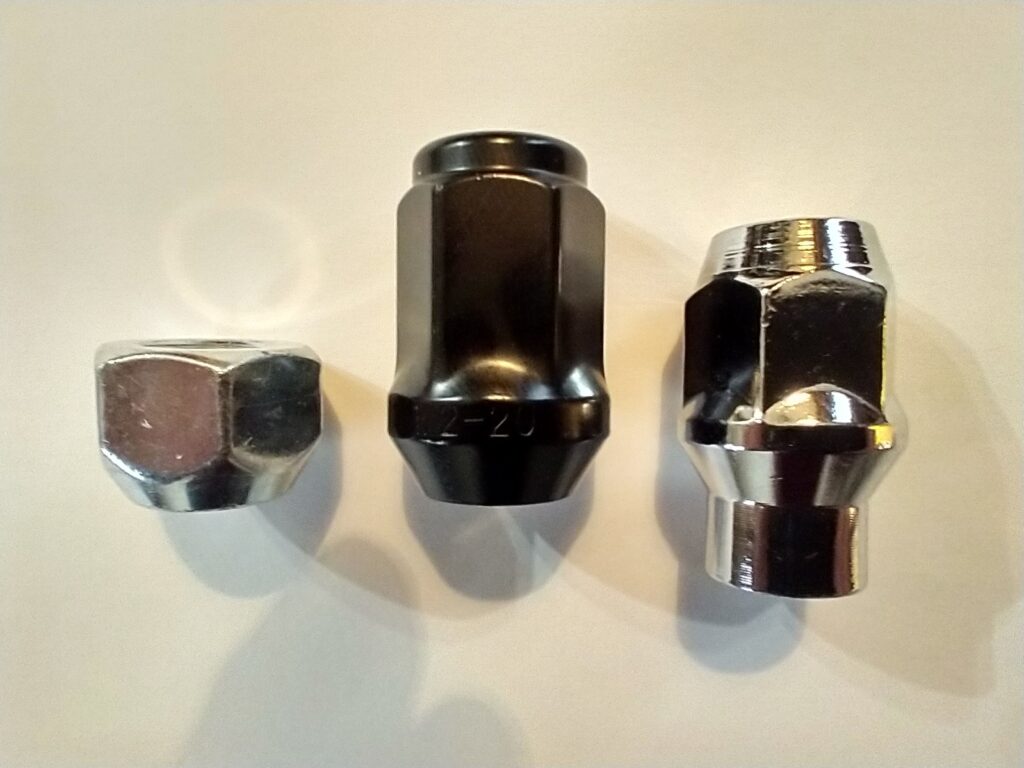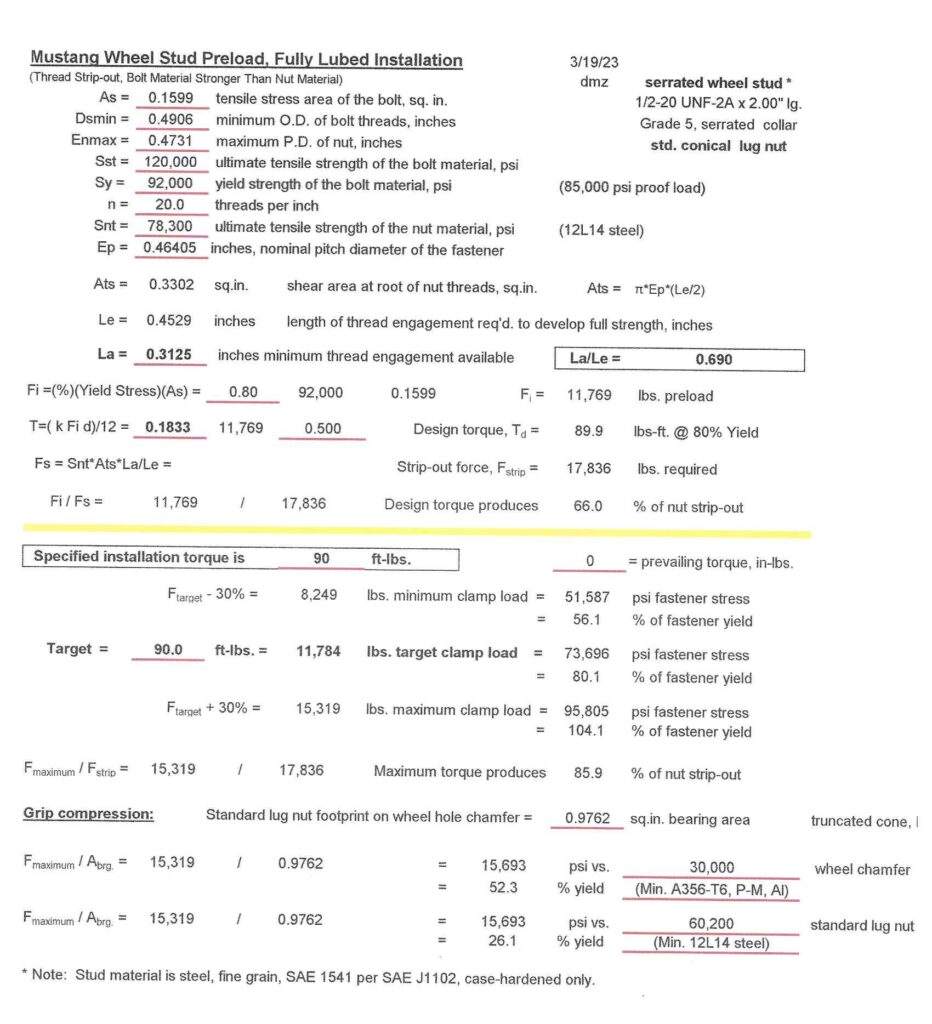A recent thread on a Mustang forum involved a question about the number of threads required to safely secure cast aluminum wheels. The original poster said he had 6 1/4 lug nut turns on his rear wheel studs and 8 1/2 turns on the front wheels. Most of the responders opined that this was insufficient thread engagement to even drive the car a short distance. In fact, at the Ford-specified lug nut torque of 90 ft-lbs, the hub studs will only see 80% of yield stress and the lug nut is only at 66% of strip-out with 6 1/4 threads engaged. For fully-lubed threads, 90 ft-lbs. will generate an initial preload of 11,769 lbs. with only the 0.3125″ full thread engagement of 6 1/4 threads. The OP was shot down for using the term “turns”, but the number of FULL turns (threads) engaged is the critical element in calculating bolted joint strength.
There was a comment that there should be at least a 1/4″ of stud sticking out beyond the lug nut, based on an arcane rule of thumb. In fact, the accepted rule is two threads should be exposed beyond the nut. This is because the first 1.5 threads on a bolt or stud are only partial threads. This is important if you are using a collared locking nut. The other issue regarding full thread engagement is the lug nut itself. A standard OEM Ford lug nut is 0.61″ tall. The internal nut thread contains partial threads due to the chamfers machined into each end, typically equivalent to one thread length on each end. Therefore, if you subtract the .050″ thread pitch x 2 from 0.61″, you get a total of 10.2 full threads. (Count them!)
This analysis of thread engagement only holds true if the lug nuts are torqued to 90 ft-lbs. The industry standard for DC electric assembly tools is target torque (90) +/- 30%, to account for many possible variables, known as “torque scatter.” According to a U.S. Air Force study, there are as many as 76 variables which make up the torque coefficient, or “k”-value, and this k value changes with the amount of torque applied to the joint. If 90 + 30% = 117 ft-lbs, is applied to the joint, a force of 17,836 lbs. could result, the stud would see 104% of yield, thus permanently stretching it. See a JPEG of the calculations at the end of this article for more information.
Two other considerations when replacing your OEM steel wheels with cast aluminum wheels: the hub area of cast wheels must necessarily be thicker to achieve equivalent strength of the steel wheel, so you probably will need longer studs. If you buy the Magnum 500 wheels from Scott Drake, there will be insufficient thread engagement with standard nuts. These wheels require their special long-nose lug nuts to engage enough threads. (See below) These long-nose acorn nuts extend below the chamfer into the wheel itself and have 22 full threads available. If you install after-market acorn lug nuts, they also are machined from 12L14 leaded steel for easier machining. Their typical thread depth is 19.5 threads. The second consideration is that aluminum wheels torqued to 90 ft-lbs will experience anywhere from 5% to 10% loss of preload due to the effect known as “creep” or “joint relaxation”, which occurs during the first few hours after initial installation. I have a significant amount of data from motorcycle wheel testing to substantiate this statement. This is exactly why manufacturers specify that you should re-check wheel torques after driving a day or two.

